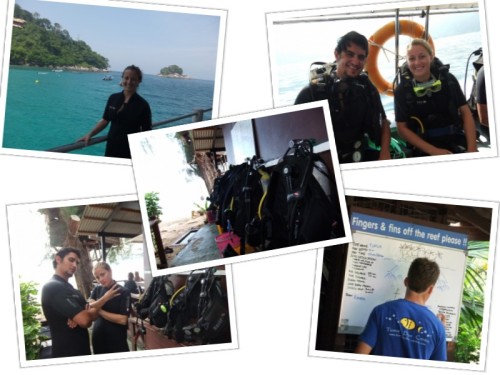As a nation, Malaysia boasts one of the highest numbers of public holidays in the world, so it is no big surprise that our trip to the city of Melaka overlapped with Malaysia Day, a national holiday to commemorate the country’s formation. As usual, we had no idea of this before we arrived. Luckily we had booked a hostel in advance based on the recommendation of a bartender on Tioman Island, so we were all set to battle the crowds when we arrived. And were there ever crowds! Since Melaka is less than a two hour drive south of Kuala Lumpur, many people from KL made the short journey for the holiday weekend. The celebration was in full swing, with live music, fireworks and food filled streets.
Malaysia is a very young country, only celebrating their 55th birthday on this past Malaysia Day. As a port city, Melaka is a good representation of Malaysia’s long history of foreign control and struggle for independence. The city was captured by the Portuguese in the early 1500s, taken by the Dutch in the 1600s, then fell to the British in 1824. All of these nations exploited their military power to seize and utilize the port of Melaka as a major trading station. During WWII, Melaka was even occupied by Japanese before finally be liberated in 1948 to rejoin the current day nation of Malaysia.
These historic factors, including the heavy immigration of Indian and Chinese populations, make the food scene in Melaka a diverse and delicious endeavor. Its been awhile since we made food the main focus of one of our posts, but our passion for it hasn’t gone anywhere. We spent a good amount of time exploring the street food scene and local restaurants. One of our favorite dishes, roti canai, is an Indian style flat bread that is served with curry and/or chickpea dipping sauce. At only 1.60RM (or about 50 cents USD) it cannot be beat.
Based on a recommendation from the owner of our hostel, we headed out one night to try Capitol Satay, a famous restaurant in Melaka where you cook skewers of veggies and meat in a bubbling vat of peanut sauce at your table. We arrived to a “closed” sign, perhaps because of the holiday, and were quite disappointed; luckily, we noticed that the entire street is full of knock-off skewer restaurants imitating their renowned neighbor. We found a suitable alternative and decided to give it a shot. To put it plainly, the meal was cheap, fun and delicious.
The food stalls at the weekend night market on the popular Jonker Street are a good representation of Melaka’s melting pot. Everything from chicken rice, poh piah, potatoes on a stick, grilled seafood, stir-fried radish cakes, sushi, noodle bowls, sweet iced drinks like soya milk and hibiscus tea, dumplings, sago gula Melaka, shaved ice, and so much more are available.
Aside from chowing on food all day long, we managed to get ourselves out for a bit of sightseeing as well. As is evidenced by the multi-cultural food scene, the presence of diverse religions is also clear. In one block you can walk by an ancient Buddhist temple, a mosque, and a Christian church. One day when we were walking through the Dutch Square, we decided why not go inside the Church of Melaka? While the architecture wasn’t particularly impressive, there seemed to be a service about to begin so we grabbed a couple hymn books and sat down to join. After reading through a few pages, Mike looks up and says “Is this a memorial service?” It sure was, and next thing we know a casket is being wheeled in through the front door. It was an awkward moment to say the least, but we managed to squeeze out the side door before anyone could ask us to share a memory about the deceased. Phew, that was a close one.
After celebrating Malaysia Day and grubbing our way through Melaka, we were faced with the choice of how to best fill our two weeks of time before catching our October 2nd flight to Perth. Two weeks is certainly enough time to explore some of Malaysia’s great national parks and the well-known Cameron Highlands, but we realized that after 8 months on the road, we had hit a bit of a wall; we were not tired of traveling, we were tired from traveling. There was only one solution that we could see, so we did what any reasonable person would have done…We found another great island and decided to spend the remainder of our days here basking in the sun.





















